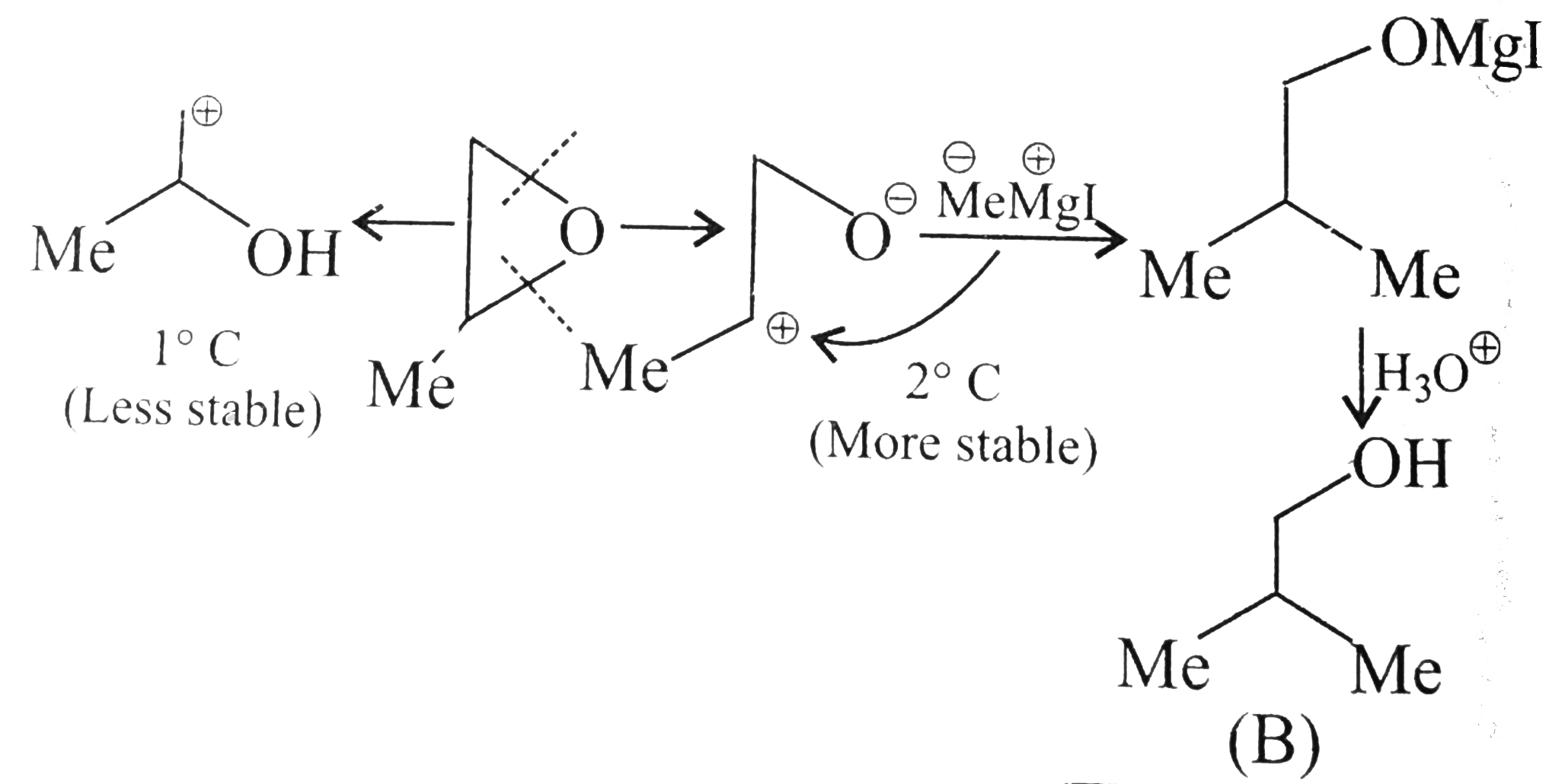Text Solution
i. This is an SN2 reaction in which the (R) group of the Grignard acts as a nucleoophile, while the MgBr cooridinates with the O and gives product (A). We know that an SN2 attack leads to the ring opening because the nuclophile forms a bond to the less to the ring opening beause the nucleophile forms a bond to the less-substitueed C. Had it been an SN1 type reaction, teh nuyclophile would have been attached to the more-sibstotuted C (due to the formation of the stable carbocation), giving isomer (B) which is not observed.
If it is SN1:


|
Topper's Solved these Questions
- AROMATIC COMPOUNDS AND ALKYL AND ARYL HALIDES Book:CENGAGE CHEMISTRY ENGLISHChapter:AROMATIC COMPOUNDS AND ALKYL AND ARYL HALIDES Exercise:Exercises Subjective Type
Explore 5 Videos
- AROMATIC COMPOUNDS AND ALKYL AND ARYL HALIDES Book:CENGAGE CHEMISTRY ENGLISHChapter:AROMATIC COMPOUNDS AND ALKYL AND ARYL HALIDES Exercise:Exercises Subjective
Explore 17 Videos
- AROMATIC COMPOUNDS AND ALKYL AND ARYL HALIDES Book:CENGAGE CHEMISTRY ENGLISHChapter:AROMATIC COMPOUNDS AND ALKYL AND ARYL HALIDES Exercise:Solved Examples
Explore 21 Videos
- APPENDIX INORGANIC VOLUME 2Book:CENGAGE CHEMISTRY ENGLISHChapter:APPENDIX INORGANIC VOLUME 2Exercise:Short Answer Type
Explore 179 Videos
- BIOMOLECULESBook:CENGAGE CHEMISTRY ENGLISHChapter:BIOMOLECULESExercise:Exercises Archives (Analytical And Descriptive)
Explore 8 Videos

